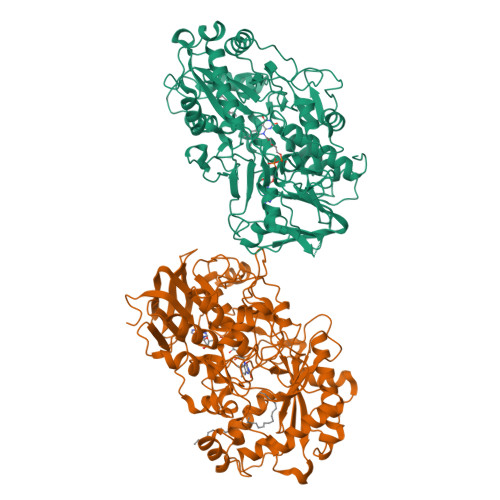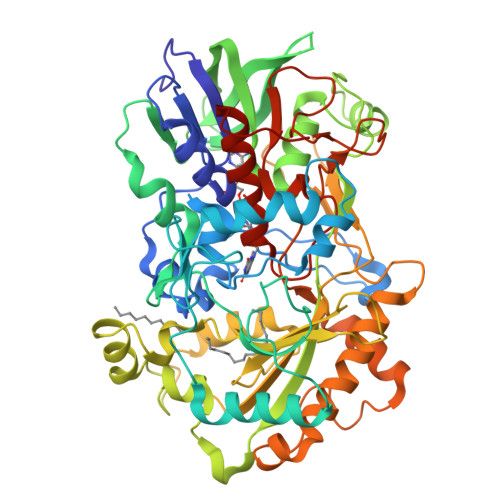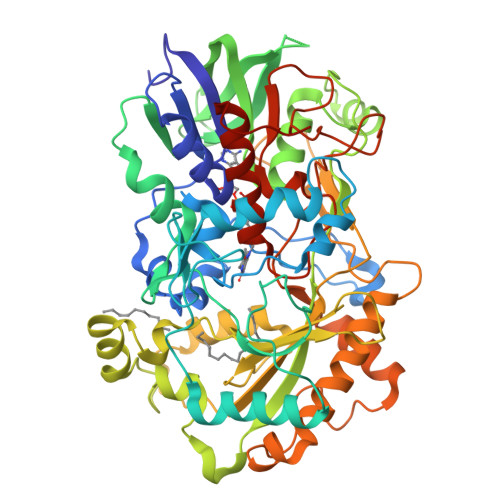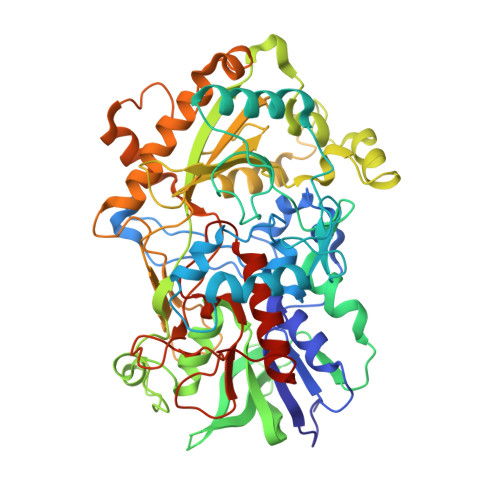Time-resolved serial femtosecond crystallography on fatty-acid photodecarboxylase: lessons learned.
Hadjidemetriou, K., Coquelle, N., Barends, T.R.M., De Zitter, E., Schlichting, I., Colletier, J.P., Weik, M.(2022) Acta Crystallogr D Struct Biol 78: 1131-1142
- PubMed: 36048153
- DOI: https://doi.org/10.1107/S2059798322007525
- Primary Citation of Related Structures:
7R33, 7R34, 7R35, 7R36 - PubMed Abstract:
Upon absorption of a blue-light photon, fatty-acid photodecarboxylase catalyzes the decarboxylation of free fatty acids to form hydrocarbons (for example alkanes or alkenes). The major components of the catalytic mechanism have recently been elucidated by combining static and time-resolved serial femtosecond crystallography (TR-SFX), time-resolved vibrational and electronic spectroscopies, quantum-chemical calculations and site-directed mutagenesis [Sorigué et al. (2021), Science, 372, eabd5687]. The TR-SFX experiments, which were carried out at four different picosecond to microsecond pump-probe delays, yielded input for the calculation of Fourier difference maps that demonstrated light-induced decarboxylation. Here, some of the difficulties encountered during the experiment as well as during data processing are highlighted, in particular regarding space-group assignment, a pump-laser power titration is described and data analysis is extended by structure-factor extrapolation of the TR-SFX data. Structure refinement against extrapolated structure factors reveals a reorientation of the generated hydrocarbon and the formation of a photoproduct close to Cys432 and Arg451. Identification of its chemical nature, CO 2 or bicarbonate, was not possible because of the limited data quality, which was assigned to specificities of the crystalline system. Further TR-SFX experiments on a different crystal form are required to identify the photoproducts and their movements during the catalytic cycle.
Organizational Affiliation:
Université Grenoble Alpes, CEA, CNRS, Institut de Biologie Structurale, 38000 Grenoble, France.



















